2020 Volkswagen Atlas Cross Sport: 5 Things We Like (and 4 Not So Much)
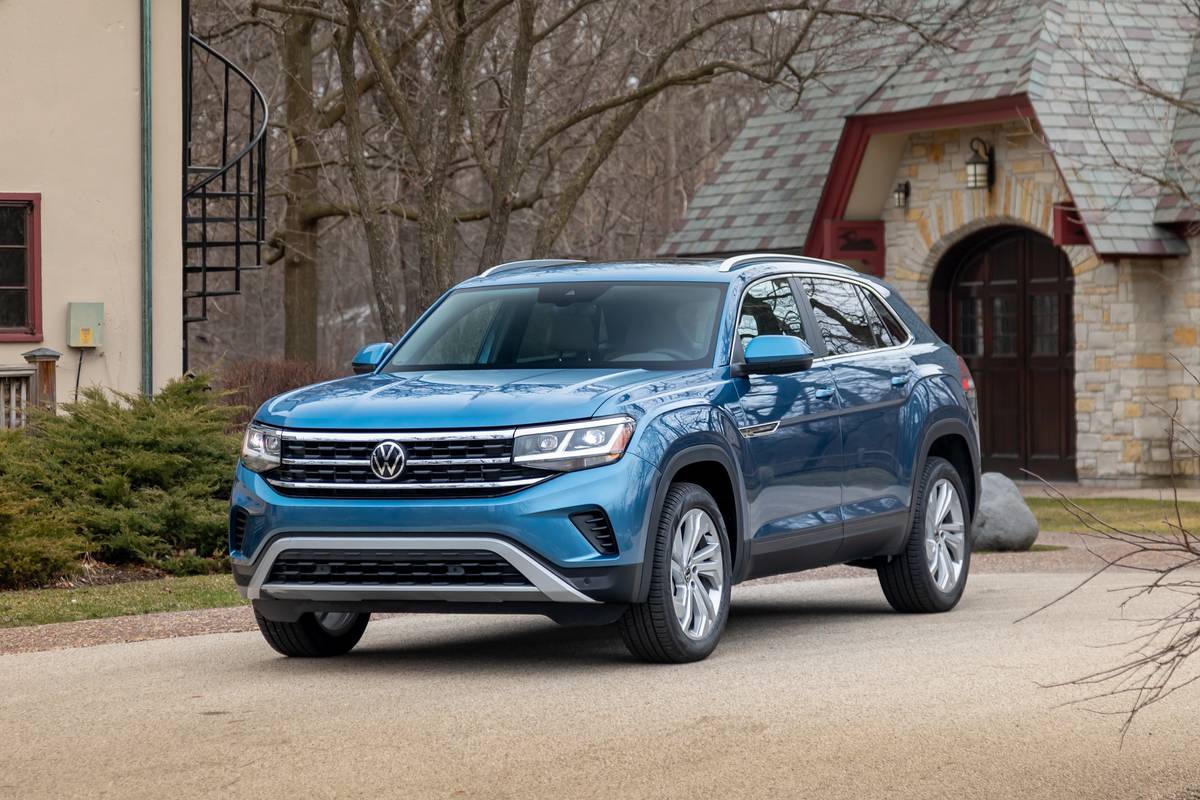
The all-new 2020 Volkswagen Atlas Cross Sport is a smaller, sleeker version of the existing Volkswagen Atlas. This two-row SUV has a lot in common with its three-row stablemate, but the Cross Sport appeals to a different set of buyers.
Related: 2020 Volkswagen Atlas Cross Sport Review: A Good People Mover … for Fewer People
- ${price_badge()}
- ${ami_badge()}
- ${battery_badge()}${ev_report_link()}
- ${hot_car_badge()}
- ${award_badge()}
- ${cpo_badge()}
${price_badge_description}
${ami_badge_description}
The EV Battery Rating is based on this vehicle's current expected range relative to the vehicles expected range when new. ${battery_badge_text}
This vehicle is certified pre-owned, backed by a manufacturer warranty, and typically undergoes a rigorous multi-point inspection to ensure quality and reliability.
This vehicle is currently in high demand given its competitive price, desirable features, and overall condition, and may have a higher chance of selling quickly.
Shop the 2020 Volkswagen Atlas Cross Sport near you

The Atlas was Cars.com’s Best of 2018 winner and is also our 2020 Family Car of the Year, so the Atlas Cross Sport has a lot to live up to. While the Cross Sport gets smaller dimensions and new coupelike styling, VW has largely stuck to what works. The regular Atlas and the Cross Sport ride on the same wheelbase, have similar interiors, and identical engine and suspension options. However, this means there isn’t a whole lot of new in this 2020 debut.
For a comprehensive look at the Atlas Cross Sport, click through the related link above to read Cars.com’s Joe Bruzek’s top-to-bottom review. If you’re just looking for the bite-size version, here are five things we like (and four we don’t) about the 2020 Volkswagen Atlas Cross Sport:
Things We Like
1. Massive Backseat
The Atlas Cross Sport is only about 5 inches shorter than the Atlas, and with one fewer row to divide that length among, the backseat is relatively large. Headroom is reduced by 2.6 inches due to the sloped roof, but there’s still plenty of room for a tall adult. The backseats don’t slide as they do in the Atlas, but they do recline, making for a pretty comfortable riding position.
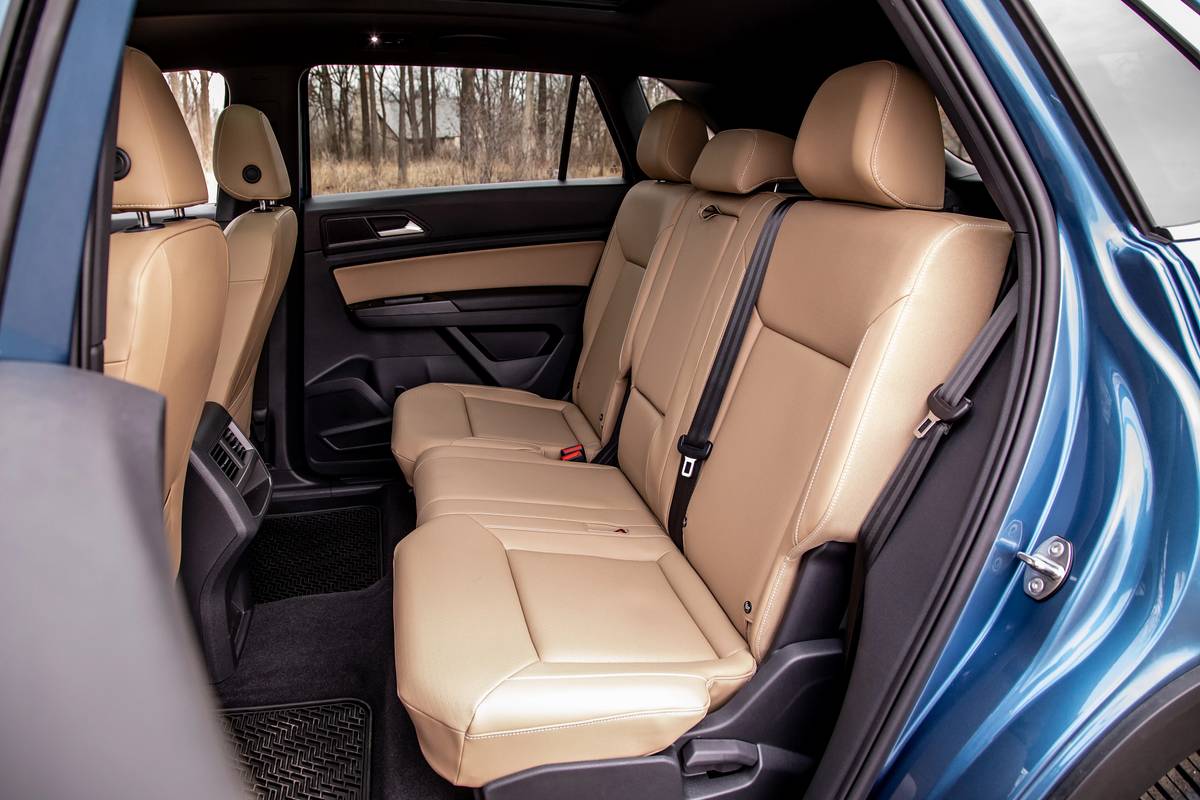
2. Athletic Drive
The standard 235-horsepower, turbocharged 2.0-liter four-cylinder performs well for everyday driving. The 2.0T is the same engine as the one in the VW Arteon and Jetta GLI; its low-rpm torque and responsive acceleration make it great for what the average driver needs.
3. Competitive Cargo Space
There is less cargo space in the Cross Sport than in the Atlas, but there are still 15.2 cubic feet of volume behind the backseat — just slightly less than what a 2020 Toyota Highlander has behind its third row. In its own class, however, the Atlas Cross Sport has more space for your stuff than the Ford Edge, Jeep Grand Cherokee or Honda Passport.
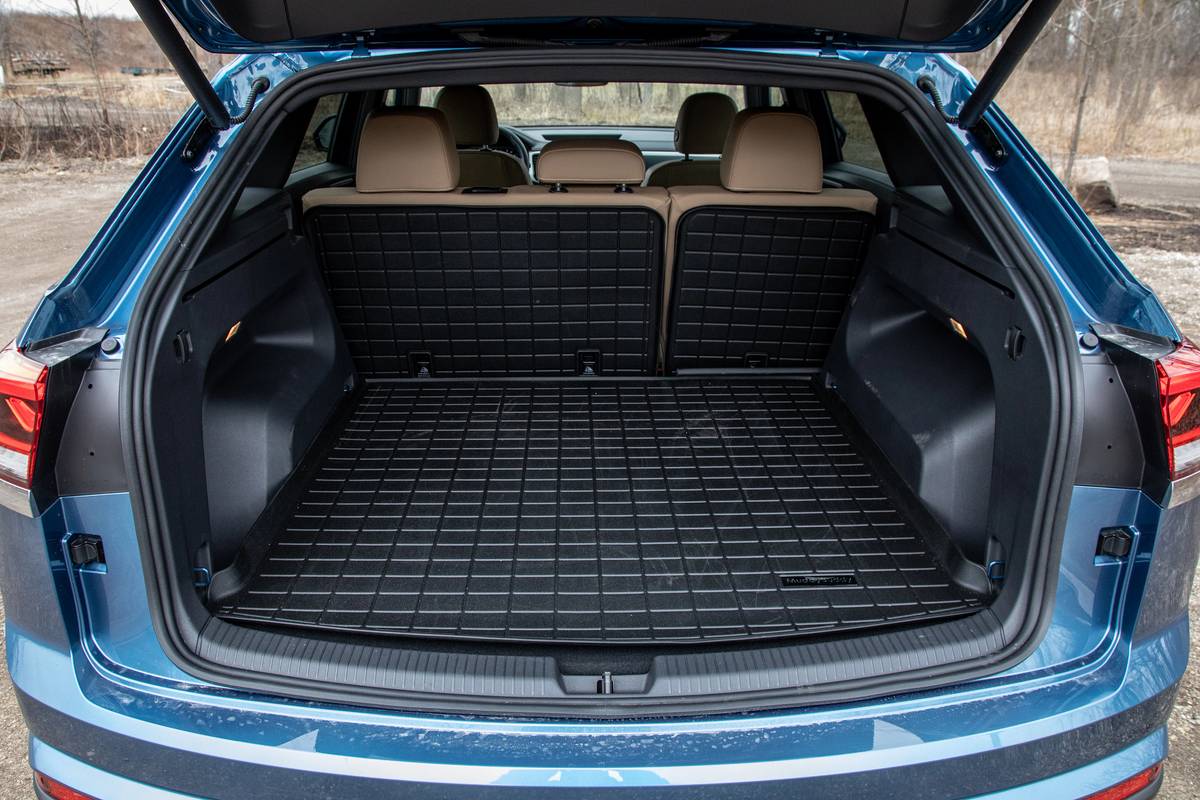
4. Newly Available Tech
Dynamic Road Sign Display and Traffic Jam Assist have become more common recently in new and redesigned vehicles, and they are standard on the SEL and SEL Premium trims of the Atlas Cross Sport. Dynamic Road Sign Display uses front-facing cameras to read road signs and display them on the digital instrument cluster or center touchscreen. VW’s Traffic Jam Assist uses the adaptive cruise control and lane-centering systems to navigate the frequent stops and starts of bumper-to-bumper traffic up to 37 mph.
5. Reasonably Priced
The 2020 Volkswagen Atlas Cross Sport starts at $31,565 (all prices include the destination charge) for the 2.0T with front-wheel drive. The SEL model we tested was $42,700, and it packs in a lot of similar features and styling upgrades as a comparable 2021 VW Atlas 2.0T SEL with all-wheel drive for $950 less.
More From Cars.com:
- Research the 2020 Volkswagen Atlas Cross Sport
- 2020 VW Atlas Cross Sport: Too Much Atlas, Not Enough Sport
- VW Unveils Coupified, Two-Row 2020 Atlas Cross Sport
- 2020 Volkswagen Atlas Cross Sport Test Drive Video: Few Seats, More Style
- Find Your Next Car
Things We Don’t
1. Not a Unique Drive
The Atlas Cross Sport drives and handles well enough, but there’s not much different about the way it drives compared to the Atlas. For an SUV with “Sport” in the name, it doesn’t feel much sportier than the larger Atlas.
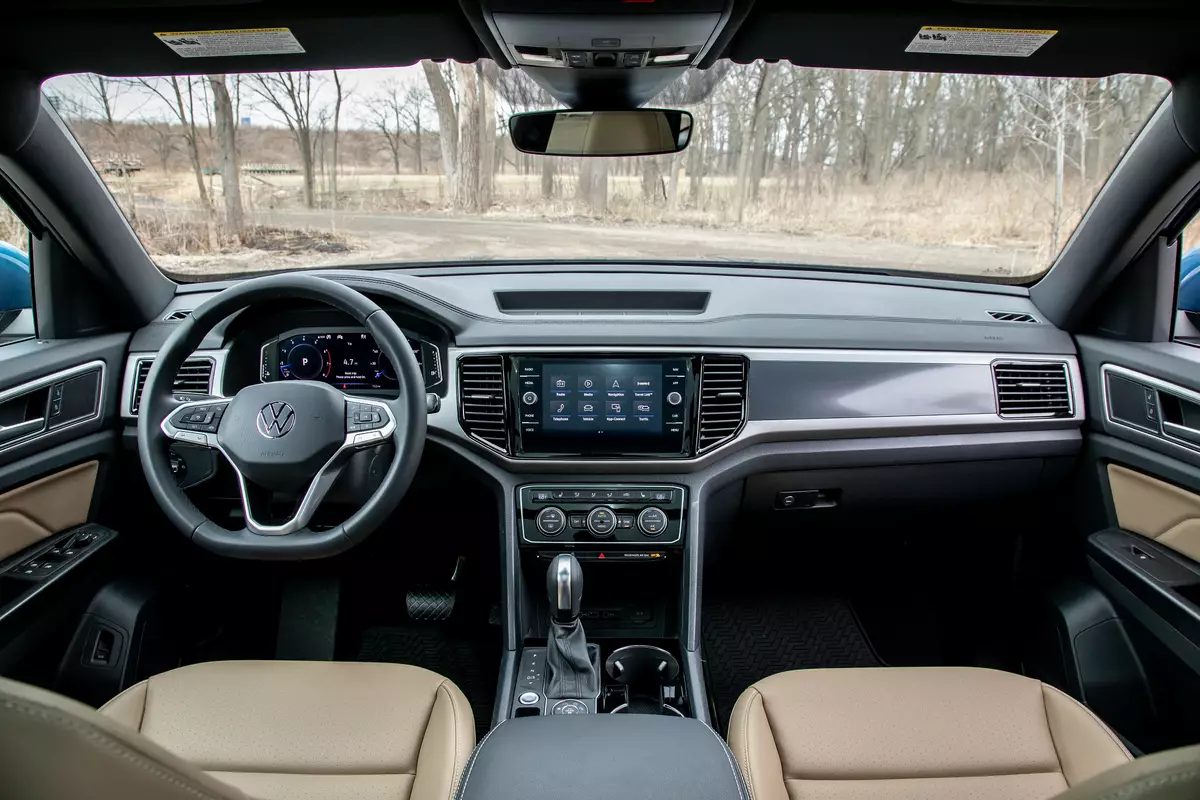
2. Needs Premium Fuel to Get Rated Power
It’s fine to use regular gasoline in the Cross Sport. In fact, the fuel-filler door recommends 87-octane fuel for the 2.0T. But to get the advertised maximum 235 hp and 258 pounds-feet of torque, you’ll need to give it premium fuel that’s 91 octane or higher.
3. Basic Interior
As with many aspects of the Cross Sport, the interior design is a copy-paste of the Atlas — and the Atlas, unfortunately, isn’t at the top of its class when it comes to interior quality. Where the bigger SUV may be able to get away with it in the name of utility, the Cross Sport feels like it deserves a little more interior luxury.
4. V-6 MPG
The 2.0T has better mpg ratings than the V-6 — up 3 mpg combined in the FWD and 1 mpg with AWD. But the four-cylinder also responds much better to efficient driving than the six-cylinder. Bruzek said the 2.0T SEL AWD Cross Sport he tested was rated 18/23/20 mpg city/highway/combined, yet he was able to get mileage in the high 20s in Eco mode at 55-65 mph. After a year of owning an Atlas SEL AWD six-cylinder, however, our average mpg was just 18.6.
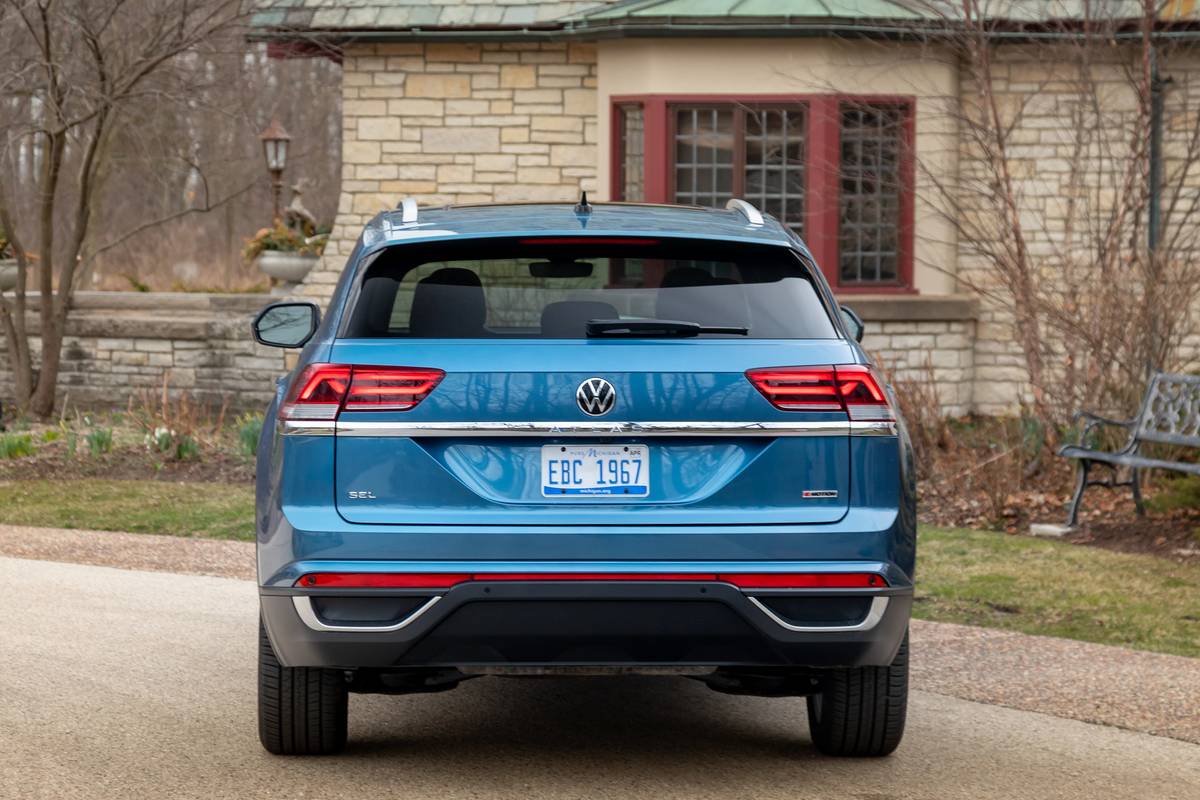
Cars.com’s Editorial department is your source for automotive news and reviews. In line with Cars.com’s long-standing ethics policy, editors and reviewers don’t accept gifts or free trips from automakers. The Editorial department is independent of Cars.com’s advertising, sales and sponsored content departments.
Featured stories

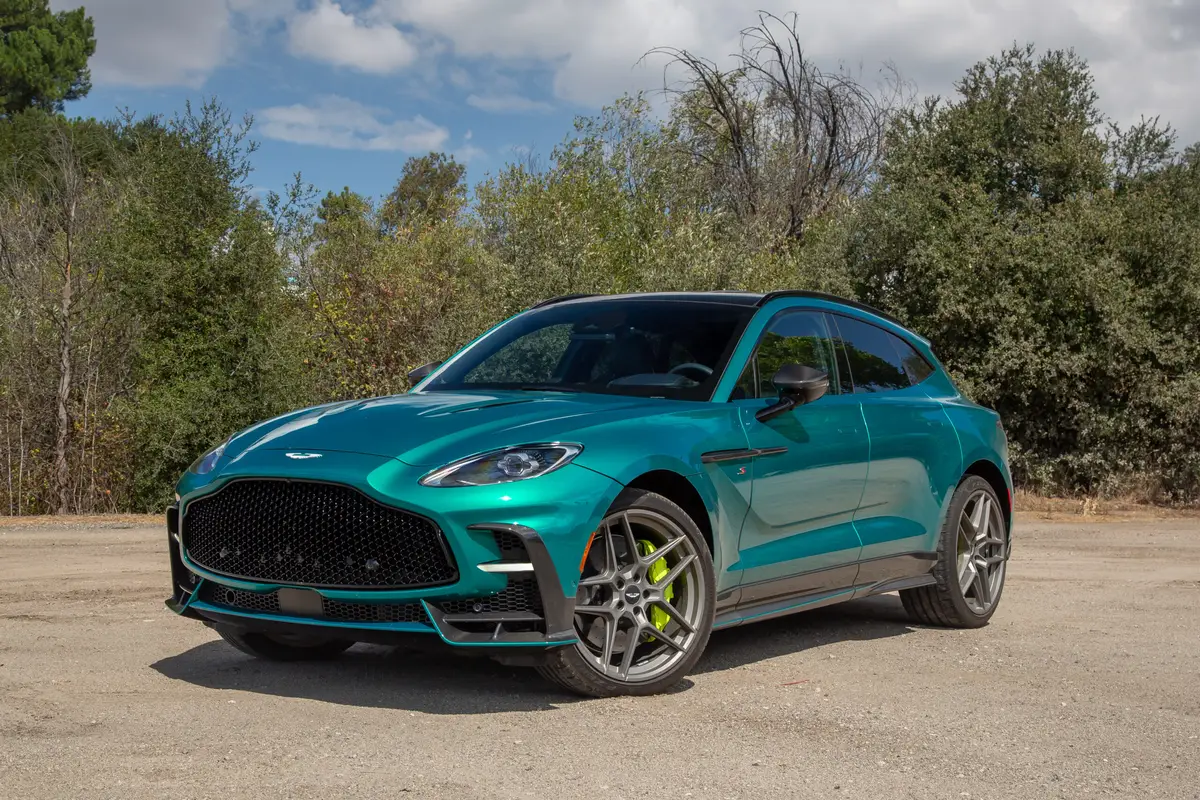
2026 Aston Martin DBX S Review: Excellence in (DB)X S


